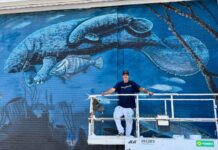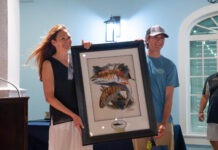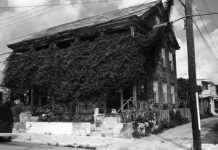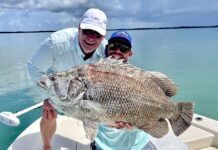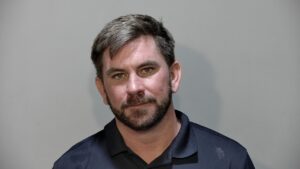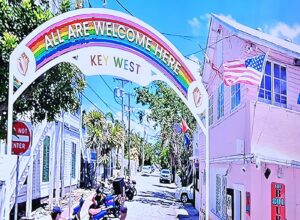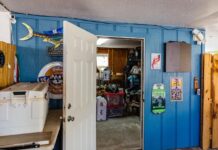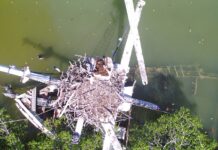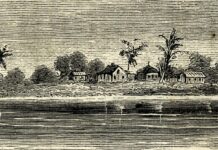To help make ends meet, I work at a shack next to the marina at Robbie’s of Islamorada a couple of days a week. I pour local beers and muddle fresh lime and mint for what I’m told are some pretty tasty mojitos.
While standing behind the little bar with five plastic stools and chatting as I pour people drinks, I am not infrequently asked if I live here. It is a fair question. I do. We were lucky and bought a little house the last time the market crashed. Otherwise, I’m not sure we could afford to still call this home.
Living in the Florida Keys is not inexpensive — which is one reason more cars are on the road than there used to be. More and more, people who work in the Keys, especially in the Upper Keys, commute from the mainland. People, too, are just moving away and doing so for a myriad of reasons with a familiar theme: “The Keys aren’t what they used to be.”
Even since 2001, when I moved to Plantation Key, the transformation of the island chain is apparent. The Florida Keys aren’t what they used to be — both on land and beneath the surface of the warm, clear waters. Still, they beat the mainland’s alternative. When I moved here, my thought process was that if I was going to pursue writing, I was going to be poor, and I was going to live where I wanted to vacation.
It was not some novel idea. Variations of the story have been repeated time after time. People and artists have always been drawn to the Keys. In the 1940s, Harry Sonntag hitchhiked down to the islands to paint watercolors. He is sometimes remembered as the “Hermit Artist of Key Largo.”
On Sunday, July 6, 1952, a story titled “Harry J. Sonntag Lives for Art Alone” ran in the Miami Daily News. “Art,” Mr. Sonntag said, “is the universal language, and my desire is to bring beauty to the multitudes, so that people may realize how lovely is this world.”
To that note, the brilliant displays of sunrise and sunset colors became his palette, and nature was his inspiration.
Sonntag built a seaside shack from driftwood and tarpaper at the edge of a Key Largo cove in the area of MM 97. There, he fished, bathed and did a bit of gardening, growing tomatoes and other vegetables. He also burned fires, not for warmth, but to help keep mosquitoes and other biting bugs at bay. In 1952, too, Sonntag strolled into the office at the Key West Citizen and told his story to reporters. The impression he left behind was that “he has found greater happiness and satisfaction than he has ever known.” According to the newspaper story, Sonntag planned to “stop his wanderings.”
He did not “stop his wanderings.” The Hermit Artist of Key Largo disappeared with his art in 1955.
Sonntag was not the first artist to find inspiration in the Keys and was not the last to leave the islands. Ernest Hemingway moved to Key West in 1928. He fell in love with Key West because, for him, it felt like living in another country. Also, there was the fishing and the proximity to Cuba.
From his office at the Hemingway House, among other works, he wrote “To Have and Have Not,” a story filled with characters he knew on the island. He moved away in 1939, though the spirit he left behind has failed to follow. People come to Key West to drink in the bars he famously frequented, tour his home and pet the descendants of the six-toed cats that roam the property, still.
For more than four decades, the island has honored the time Papa spent in Key West by celebrating Hemingway Days. The scheduled activities include a mock running of the bulls and a look-alike contest. Interestingly, the look-alike contest winner always seems to be the classic grey-bearded Hemingway and not the man as he appeared when he lived on the island and was writing, drinking and leaving behind those deeply embedded footprints.
When I moved to Florida in 1989, I arrived more like Sonntag than Hemingway and hitchhiked out to my first Florida island. Neither of the two gentlemen served as some guiding light when I came to the Keys in 2001. At the time, I’d never heard of Sonntag, and I wasn’t a fan of Hemingway.
However, there was an early Key West “influencer” who struck a chord and produced a vibe I found attractive. The first time he came to the Keys, he tagged along with Jerry Jeff Walker, who wrote the song “Mr. Bojangles.” Jimmy Buffett, the young, up-and-coming songwriter from Nashville, drove down the Overseas Highway to the Southernmost City with Walker in 1971. Key West and the Florida Keys were never quite the same again.
The two played their guitars around the island, busking for beer money, and Jimmy fell in love with the island. Buffett moved to Key West in 1972. Perhaps no artist has left a bigger footprint on the spirit and culture of the Florida Keys. He even left his name on Florida’s A1A, the renamed Jimmy Buffett Memorial Highway that includes a stretch in Buffett’s beloved Key West.
These are not the same Florida Keys that Harry Sonntag hitchhiked to, Hemingway impacted, or that Jimmy Buffett sang so whimsically about. People say that death and taxes are the two constants in life; change is one, too. The coral reefs have changed. The fishing has changed. Certainly, the traffic has changed as these sleepy islands are built out more and more. One day in the not-too-distant future, people will look back at 2025 and reminisce about the good old days. It is hard to imagine what the Florida Keys will look like then.




